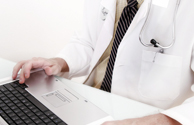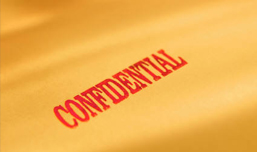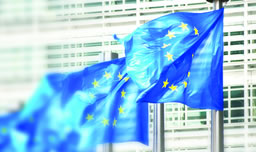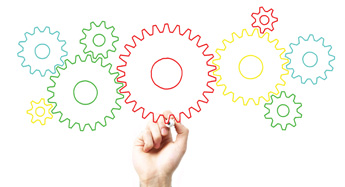Hearing, seeing, moving (Part 2) - key issues in regulation and protection
March 2015
Hearing, seeing, moving - the miracle of neural prosthetics explained some of the stunning developments that are occurring in the field of neural prosthetics. Sophisticated combinations of computer programming, electronics and mechanics mean that the miracle of making people hear, see and move again is already being realised.
It now remains for neural prosthetics to be ever more finely engineered to produce an experience for the patient that comes close to that which most take for granted. This process will take a huge and continuing research effort, and great financial investment will be needed, but there is every reason to suppose it should be successful. The technology involved will likely spread from overcoming deafness, blindness and physical disability to prosthetic enhancements. As more devices become viable at commercially accessible prices, demand will increase and more businesses will be attracted to the field. This is where the more mundane, but difficult and necessary questions about regulation to protect both individuals and commercial investment in innovation will arise. Key issues in regulation and protection are discussed in this part II of Hearing, seeing, moving.
Intellectual property protection
Patent protection
Novel and inventive devices and systems – innovative prosthetics and their means of operation – are more usually the subjects of patent protection. Patents are registered rights, protecting everything expressly recorded in their claims.
Patents currently protect on a country-by-country basis, although a new 'unitary patent' right that protects a large part of the EU is expected to become available in 2017. A national patent may be obtained, through a national office (for the UK this is through the UK Intellectual Property Office (UKIPO)); or, a European patent designating several European countries may be obtained, through the European Patent Office (EPO); with the additional possibility of entering either system by means of an international application under the Patent Co-operation Treaty (PCT). If granted, a patent confers an exclusive and absolute right to exploit what is covered by the patent and can give 20 years protection provided it is renewed (and the relevant fee paid) every year from the 4th anniversary of the filing date.
A UK or European patent (and when it is available, a unitary patent) is infringed by doing certain acts in the territory protected without the patent owner's (or their licensee's) consent, these being:
- making, disposing of, offering to dispose of, using, importing or keeping a patented product or a product obtained directly by means of a patented process;
- using, offering for use in the territory a patented process; and
- supplying or offering to supply in the territory a person other than a licensee with any of the means relating to an essential element of the patented invention for putting the invention into effect – in order to infringe the supplier must also know, or have reason to believe, that such means will be used to put the patented invention into effect in the territory.
See Technology / IP
 Computer implemented inventions
Computer implemented inventions
As well as protecting against the direct copying of the invention, patents cannot be avoided by reverse-engineering and they protect against the production of the same invention completely independently.
The problem with patents as regards computer implemented inventions (technical apparatus operated or assisted by computer programs) is that the law governing patents in Europe, European Patent Convention ("EPC"), contains a provision that excludes programs for computers from protection. This is implemented in the national laws of the contracting states to the EPC. The effect of this exclusion is that a pure computer program is not patentable – pure programs therefore remain the preserve of copyright and confidentiality. However, the EPC does say that the exclusion only applies to computer programs "as such". This means that inventions which do not consist purely of computer software, but instead implement the software in a device or a system, are potentially patentable. This suggests that many neural prosthetic systems, in which software is an adjunct to the technical apparatus, are potentially patentable.
See "Tricky Territory": Computer implemented invention patenting
"Who owns the patent?
When considering applying for a patent to an invention, or dealing in patent rights, it is important to understand who is entitled to the patent and whether there may be third party claims to rights of ownership. This can be a particularly complex issue in the context of employee inventions and where there is more than one inventor.
See Who is entitled to a patent?
Design protection
In some cases, objects will be protected by design rights. Commercial reproduction of certain objects used in neural prosthetics could amount to infringement of a design right. There are four different types of design right and the law governing their application is complicated. Where an object is protected by these rights, the rights will be infringed where an unauthorised third party makes a copy. It will not be an infringement for a third party to copy any features of a protected design that enables their own design to be connected to or matched with the protected design. Design features enabling one product to be functionally fitted or aesthetically matched to another are specifically excluded from protection.
See Technology / IP
Copyright
Copyright gives a bundle of rights to creators to prevent other people from copying, using or exploiting their original works without their consent. It is the most pervasive of all intellectual property rights, subsisting in anything from menial pieces of text to great works of art, literature and music. Computer programs also attract copyright protection.
Copyright only protects "original works". Would-be copyright owners have to show two things:
- that their creation is original - i.e. that it originates from the creator and has required some intellectual creation in creating it. This is normally easy to show; and
- that the creation fits into one of the categories of work that copyright protects.
See Technology / IP
Although copyright may protect the underlying software in a neural prosthetic system, this form of protection is limited. For example, copyright law cannot prevent the independent development of rival products, it can be hard to prove and it is generally inadequate to stop reverse engineering. For this reason, patent protection is preferable if it is available (see above).
 Trade secrets protection and confidentiality
Trade secrets protection and confidentiality
The law of confidential information is an ancillary right used to protect commercially sensitive, valuable and private information which is not afforded protection under more usual intellectual property rights such as copyright and patents. This protection is generally owed to the person who created the information (or paid for it to be created), but the rule is not absolute and is largely dependent on the circumstances in each case. An obligation of confidence can also apply to third parties who receive information by accident or through any other means, even if they don't know at first that it is confidential.
To be protected, the information must have the required "quality of confidence" (i.e. not be public property or information in the public domain) and have been disclosed in circumstances where an obligation of confidence would be expected to arise. Merely stating something is confidential will not automatically mean it is confidential information.
Furthermore, whilst the law of confidentiality can provide a remedy for those who believe that features of their systems have been covertly taken, such claims are by no means straightforward – as with copyright, it is necessary to prove derivation from the claimant's work.
See Technology / IP
Regulation of medical devices
Implantable devices and devices serving therapeutic purpose or use in medical treatment are regulated as 'medical devices'. Medical devices are regulated by a system of complex European and national legislation, which is developing as new technologies emerge. The issues raised by neural prosthetics are at the cusp of these developments.
The current regulatory regime
There are currently three key European Directives that govern the requirements that manufacturers must meet before marketing medical devices. Two Directives are specific to particular types of device: active implantable devices (e.g. an implantable pacemaker) and in vitro diagnostic medical devices (e.g. an assay to determine a patient's sensitivity to a particular medicine). The third covers all other types of medical devices (anything from dressings, vascular stents and X-ray machines to spectacles).
The present Directives aim to harmonise requirements for putting medical devices on the market in EU Member States. In the UK, the provisions of the Directives are implemented by the Medical Devices Regulations 2002.
Medical devices must meet certain "essential requirements" before they can be put on the market in a Member State. The essential requirements are set out in the relevant Directive. If a device is considered to meet the essential requirements it can be marked with a CE mark. In order to apply the CE mark, the manufacturer must also follow the appropriate conformity assessment procedure. For devices which occupy one of the higher classifications and for all active implantable medical devices, conformity is assessed to a greater or lesser extent by a Notified Body (an independent entity that has been designated by the national regulatory body).
See The regulation of medical devices – an overview
 On 26 September 2012, the European Commission published new legislation in the form of two draft Regulations to govern the regulation of medical devices and in vitro diagnostic medical devices in Europe. The Regulations are intended to replace the Directives which currently provide the regulatory framework. The key aims of the revisions include improving harmonization between Member States and restoring public confidence in the wake of the PIP scandal, while still ensuring prompt access to innovative devices for patients and medical professionals. The overarching theme of the new Regulations, therefore, is a tightening up of the regulatory framework, rather than a complete revision.
On 26 September 2012, the European Commission published new legislation in the form of two draft Regulations to govern the regulation of medical devices and in vitro diagnostic medical devices in Europe. The Regulations are intended to replace the Directives which currently provide the regulatory framework. The key aims of the revisions include improving harmonization between Member States and restoring public confidence in the wake of the PIP scandal, while still ensuring prompt access to innovative devices for patients and medical professionals. The overarching theme of the new Regulations, therefore, is a tightening up of the regulatory framework, rather than a complete revision.
See Where is the new medical devices legislation?
However, there is still a long way to go in the legislative process before the reforms proposed by the new medical devices legislation come into force. In an area of rapidly developing technology of the kind seen in neural prosthetics, this is a potential problem. For example, a response from the Medicines and Healthcare products Regulatory Agency to a public consultation on the current recast of the legislation has already conceded that there is a great deal of uncertainty about how software in medical devices in general should be regulated. Furthermore, there is debate about the extent to which non-medical devices should be regulated where they are invasive. This suggests issues will arise about the regulation of borderline prosthetic devices in which it is difficult to determine whether the devices should be subject to regulation as medical devices, or more properly considered as enhancement, recreational or fitness tools. The concept of remote monitoring and data collection also poses challenges for the definition of 'near-patient testing' under the regulation of in vitro diagnostics, as does the involvement of hospitals in in-house manufacturing of such systems.
As technology continues to move at a rapid pace in this area, it should be expected that regulation and its interpretation will need to change and adapt accordingly.
See also Wearable technology in the medical devices sector
If you have any questions on this article or would like to propose a subject to be addressed by Synapse please contact us.


Paul England
Paul is a senior associate and professional support lawyer in the Patents group based in our London office.
""...many neural prosthetic systems, in which software is an adjunct to the technical apparatus, are potentially patentable."

